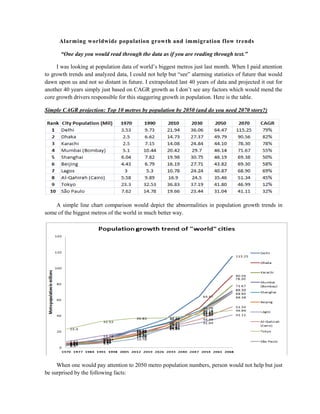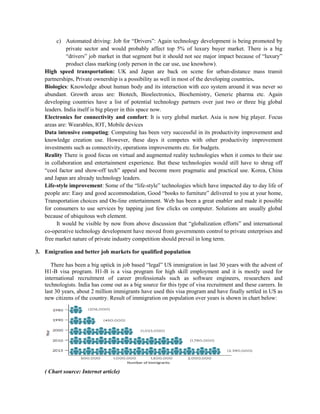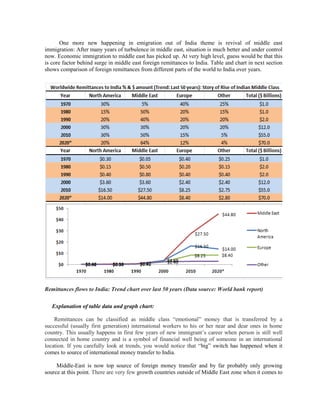1) The document projects population growth trends for the world's largest cities out to 2050, finding that 4 of the top 5 most populated cities will be in South Asia, led by New Delhi, India with 65 million people.
2) It discusses the challenges of supporting such large populations concentrated in small areas and proposes solutions like planned urban developments and converting to high-rise and public transportation-centered living.
3) Globalization and technology development trends are analyzed, finding a shift from uniform collaboration to regionalization of efforts, with countries like China, India, Japan, UK, Germany, Russia pursuing more independent paths.









